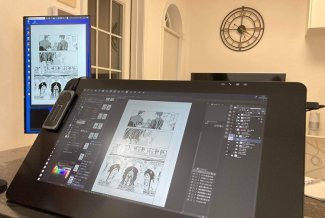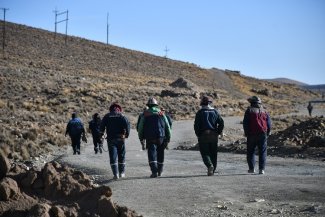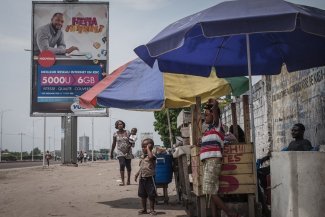A hundred and fifty workers die each day in the United States as a result of injuries at work or occupational diseases.
The American Federation of Labor and Congress of Industrial Organizations (AFL-CIO), the largest trade union federation in the US, makes this observation in the latest edition of Death on the Job: The Toll of Negligence, based on the statistics of the US Secretary of Labor.
In 2013 alone, more than 4,500 people were killed on the job, and approximately 50,000 other workers died as a result of diseases contracted during their working life.
“North Dakota continues to stand out as an exceptionally dangerous and deadly place to work,” indicates the AFL-CIO report, with “the highest job fatality rate in the nation”, at 14.9 per 100,000 workers, which is more than four times the national average. The dizzying rise of shale gas exploitation via hydraulic fracturing is largely to blame for this sorry record.
It is, however, Texas, another US state marked by the rise of “fracking”, that is clocking up the largest number of fatalities during working hours: 493 in 2013 alone, that is more than California, which recorded 385 deaths for a population of almost 39 million inhabitants, compared with less than 27 million in the Lone Star State.
Race to the bottom on building sites
“More workers die in Texas than in any other State,” denounces the Workers Defense Project (WDP) based in the state’s capital, Austin, where its main focus is the construction industry.
This sector heads the list of the most deadly, alongside land transport in the United States.
In this rapidly growing region, where demographic growth has been more than double the national rate over the last five years, “one in thirteen members of the active population works in construction,” underlines Robert Delp, head of the WDP’s Better Builder programme.
It is through this programme, launched three years ago, that constructors commit to giving safety training to all those working on their building sites and ensuring that they receive compensation in case of injury.
“We have to find new ways of rewarding builders who want to do things right,” continues Delp.
Restricting the allocation of public contracts to companies that allow their employees to take breaks and supply them with water, as the Austin City Council does, is not enough to create a culture of safety, he points out.
Moreover, Delp points out, “The workers on building sites are mainly Latinos, foreign-born in most cases”.
“The death rate among Latino workers rose to 3.9 per 100,000 workers in 2013, relative to 3.7 per 100,000 in 2012,” alerts the AFL-CIO, noting that “two thirds of those who died were workers born outside of the United States”.
The trade union reports that, “The construction sector was responsible for the greatest number of Latino worker deaths.”
A worker whose finger was amputated after the foreman let his drill slip; another dismissed after suffering a back injury; the medical expenses of a painter with no insurance, having been illegally classified by his employer as a service provider rather than an employee... The catalogue of cases recorded by the WPD underlines the scope of the progress still to be made.
Having lost five of his toes on a building site, the worker of Mexican origin Javier Bautista reports that he was not even paid for the job. “You have to pay your rent, you need food to eat, and so you go to work. But they didn’t even pay me. It was all for nothing.”
“As shown by the research conducted by the Workers Defense Project with the universities of Texas and Illinois, one building worker in five will suffer a serious occupational injury during his working life in Texas,” denounces Matt Gonzales, a member of the Laborers’ International Union of North America (LIUNA), which coordinates training courses on safety at work in Austin.
“Workers are still seen as an abundant commodity in this country. It is a race to the bottom, with everyone trying to find the cheapest employees.”
To break out of this system, which too often regards building workers as a commodity like any other, “everyone needs to know their rights, and everyone needs a trade union” says Gonzales, stressing that only five per cent of the building sites in Texas are unionised.
The WDP also emphasises the need for immigration reform, to legalise the huge undocumented workforce, which tends to put downward pressure on pay and working conditions.
Despite the scope of the problem, the labour movement is ready to fight to organise more workers and to instil a culture of occupational safety. “Our union has a decades-long history of strikes and production site stoppages. Just like us, people had had enough of being used and mistreated,” concludes Gonzales.









